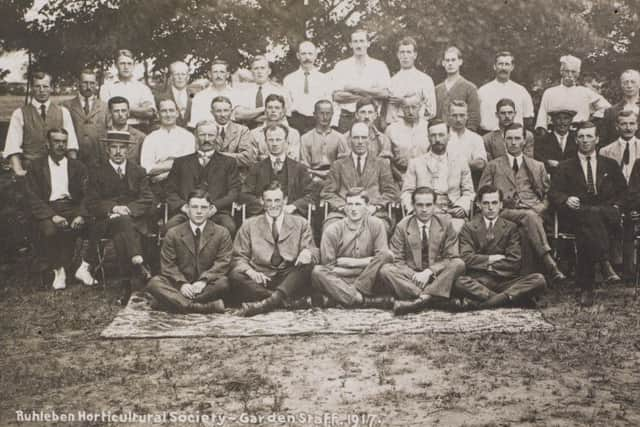The Great War PoWs who found solace in gardening


Being a prisoner of war in Germany during the Great War must have been a mixed blessing. On the one hand you no longer faced the mud, squalor and perpetual fear of life in the trenches, but on the other hand there was the threat of typhus epidemics and the pain and ignominy of being held captive.
By 1915, Germany held over a million prisoners of war and many PoWs didn’t make it home alive. But it wasn’t all misery. A new exhibition charting the remarkable story of how gardening helped British prisoners endure internment during the First World War is being told by RHS Garden Harlow Carr, in Harrogate, in the New Year.
Advertisement
Hide AdAdvertisement
Hide AdGardens Behind Barbed Wire opens next week and the exhibition – on loan from the RHS Lindley Library in London – tells the story of an intrepid group of British men who set up a horticultural society in the bleak surroundings of the Ruhleben Internment Camp in Germany, and helped to feed their fellow prisoners throughout war.


Sue Padgham, the Librarian at Harlow Carr, has a personal connection with the new exhibition. “My grandfather, Thomas Thomas, was detained at Ruhleben because he was working in Hamburg for the Southern Cotton Oil Company on the day war broke out,” she says.
“He was detained at the camp for two years, then unexpectedly released in January 1916, along with 69 other men – many from fishing vessels captured in the North Sea – plus children and 10 members of the Royal Army Medical Corps.
“I know he travelled home to England by merchant ship from Flushing but I’m not sure why he and the others were chosen to be released – perhaps because of ill health or because they no longer posed a security risk.”
Advertisement
Hide AdAdvertisement
Hide AdThomas was one of more than 5,000 British men and boys interned at Ruhleben, an old racecourse outside Berlin, which was described when it opened as “scandalously inadequate” and “not fit to keep pigs in”.


Working together they transformed the camp, overcoming terrible conditions to create a self-governing society within its fences with the Ruhleben Horticultural Society playing a key role.
“What started with a handful of green-fingered internees growing pansies and violets in biscuit tins to disguise their bleak surroundings soon developed into a fully–fledged horticultural society, its members eventually numbering more than 900,” says Sue.
“Gardening offered a rare opportunity to shape an environment that was largely out of their control. The plants did not just disguise barbed-wire fences; they helped prisoners to forget the fences as they lost themselves in the simple but absorbing task of growing things.”
Advertisement
Hide AdAdvertisement
Hide AdThe society managed to feed the camp’s inmates and organise flower shows to boost morale. A potting shed and glasshouse were built and a steam heating system was rigged up from the camp’s boiler, allowing inmates to grow “a wonderful crop of melons and tomatoes”.
At their flower shows, prizes were awarded for vegetables, cut flowers, sweet peas, table decorations, windowboxes and gardens. The PoWs even sent photographs of their gardens back to the RHS which, in turn, sent seeds, bulbs and advice to the Ruhleben prison, deep behind enemy lines. The two societies corresponded throughout the war, with internees sending back the photographs, letters, drawings and reports which make up most of the exhibition at Harlow Carr.
It was a shining example of how gardening can be therapeutic, even in the darkest of times.
Gardens Behind Barbed Wire runs from January 7 to February 26, in Harlow Carr’s Bath House.